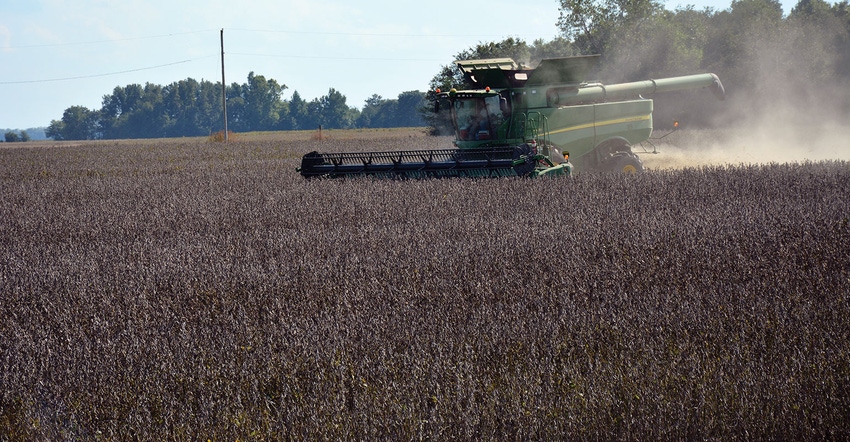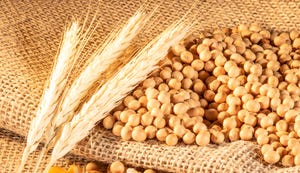
As farmers make the final push to finish 2020 crop production, they also should consider late-season economic decisions that affect profit potential.
Marketing decisions, assessing harvest equipment needs and responding to potential coronavirus impacts deserve attention, says LSU AgCenter economist Michael Deliberto, Baton Rouge.
"With the advent of harvest, reexamining marketing programs is always a good idea," Deliberto says. He says a top priority in any marketing plan is to identify the cost of production per unit (e.g. bushel). "This can be interpreted as the breakeven point or the price needed to cover direct production expenses such as fertilizer, chemicals, labor, fuel, etc. at a projected yield level."
Production costs
He suggests looking back at the original marketing plan completed earlier in the season, and then asking if production costs have changed?
"Did weed or insect pressure trigger additional herbicide and/or insecticide applications? Did nutrient deficiencies require additional fertilizer? If so, the cost of additional applications can affect the total direct cost per acre. As the direct cost of production per acre increases, the cost per unit will increase."
Deliberto says added expenses increase the breakeven cost per unit. "Ask how the marketing plan will absorb this increase given the recent performance of the commodity market."
He says a pre-harvest marketing plan encompasses two key decisions farm managers will need to establish based on their cost of production — price targets and decision dates.
"For example, a producer should set minimum price targets in the cash market or the futures market. The cost of production (breakeven) price is key. The minimum price target should cover the direct cost of production, to include a portion of fixed expenses."
Estimating the historical basis plays a role. "What is the basis level for a futures contact (e.g. December corn) at harvest? An individual producer can do little to nothing to improve the basis," Deliberto says. "However, producers should consider which delivery locations are most profitable. Each grain buyer sets its own basis. Shopping around for the best basis may help gain a couple of cents."
The upper limit of a price may be of reduced importance compared to a producer's minimum price, he adds. "Producers should adapt minimum prices and basis for their area. On the high side, a producer should identify what is their price for December corn given what the current market fundamentals dictate.
Market timing
"Decision dates have a way of diminishing the importance of maximum price targets. Realistic target prices should be set based on grounded market expectations."
He says the USDA WASDE reports typically estimate marketing year farm prices, giving producers a gauge to set price targets. "Market dynamics will play a role in this decision. As the USDA has already incorporated a supply and use balance sheet with acreage expectations into their projections, weather plays a major role in the summer months."
Deliberto says weekly USDA crop condition/progress reports also may provide information on crop maturity from trends. "Ask if price risk has been mitigated to some degree with futures and options. This is a question about basis and 'upside' potential. Is storage an option on the farm?"
He says timing markets may make a difference. "Decision dates represent the timing of pricing grain, regardless of whether the price target is met, as long as the price is higher than one’s minimum. Decision dates are critical; they transform a marketing plan from a plan on paper of high prices to a real plan of action."
He cautions that markets are fickle. "An attractive price for December corn yesterday may not be attractive today. Hindsight always appears to be 20/20. If a sale was made, how much production was booked?"
Equipment maintenance
Preparing harvest equipment early may save costly downtime, Deliberto says.
"Farm equipment maintenance is a year-round job," he says. "Annual machinery and equipment preparation is a comprehensive activity that includes reviewing machinery management system records, accessing the inventory and preforming diagnostic checks, recalling past issues, and knowing what inputs will be required."
He says machinery management and operational efficiency can affect harvest costs. The length of run time, which affects the amount of diesel fuel consumed and the operator hours on the machine are factors."
Other considerations include: "Has diesel fuel been secured and pre-booked at favorable prices? Hopefully, repair and maintenance schedules have been kept up and machines are ready. Of course, producers expect the unexpected.
"Adverse weather, for instance, can reduce harvest combine efficiency and even reduce quality of the harvested commodity. The first can add costs to the operations while the latter can result in a price discount at delivery. Both have a negative impact on economic return."
Deliberto says 2020 brings some unique challenges to harvest season.
"Will (pandemic induced) social distancing affect labor operations at loading sites and at delivery points? Will this change the logistics of harvesting via scheduling labor and trucking from field to elevator?"
He recommends that producers check with elevators to determine their social distancing protocol to minimize wait times.
The current crop year has brought numerous challenges, including difficult planting seasons, high production costs and questionable commodity markets. COVID-19 adds another stress point.
With crops almost made, Deliberto says producers should take a hard look at the costs they can manage, market plans they can execute or alter and maintenance projects they can undertake to save time and money when harvest equipment moves into the fields.
About the Author(s)
You May Also Like






